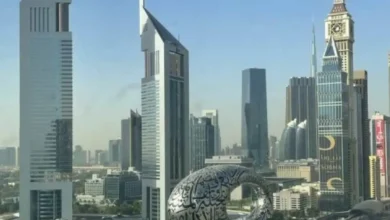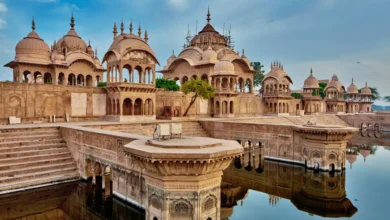Morocco, a North African country with a rich history and diverse cultural influences, has captivated the world with its unique blend of art, design, and cuisine. This allure stems from a fascinating tapestry woven from Berber, Arab, European, and sub-Saharan African traditions. Let’s explore why this captivating country has captured the global imagination.
A Tapestry of Artistic Influences: Moroccan Art
Moroccan art is a vibrant reflection of its history and cultural exchange. The diverse influences have created a visual language that is both exotic and deeply rooted in tradition. From intricate tilework to handcrafted leather goods, the artistry showcases remarkable skill and creativity.
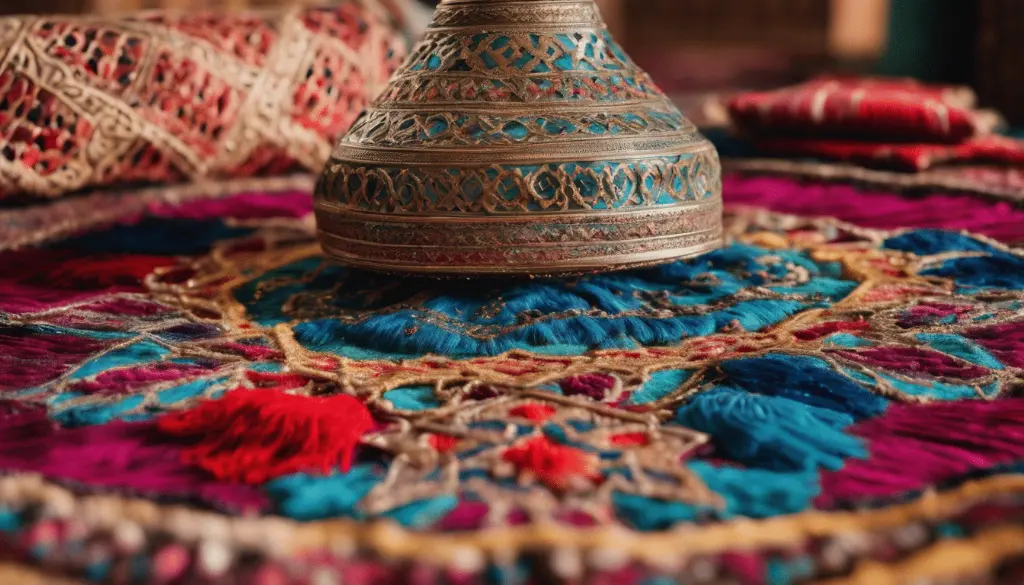
Zellige: The Art of Geometric Tilework
Zellige, or mosaic tilework, is perhaps one of the most recognizable aspects of Moroccan art. This ancient craft involves creating intricate geometric patterns by piecing together individually cut, hand-chiseled tiles.
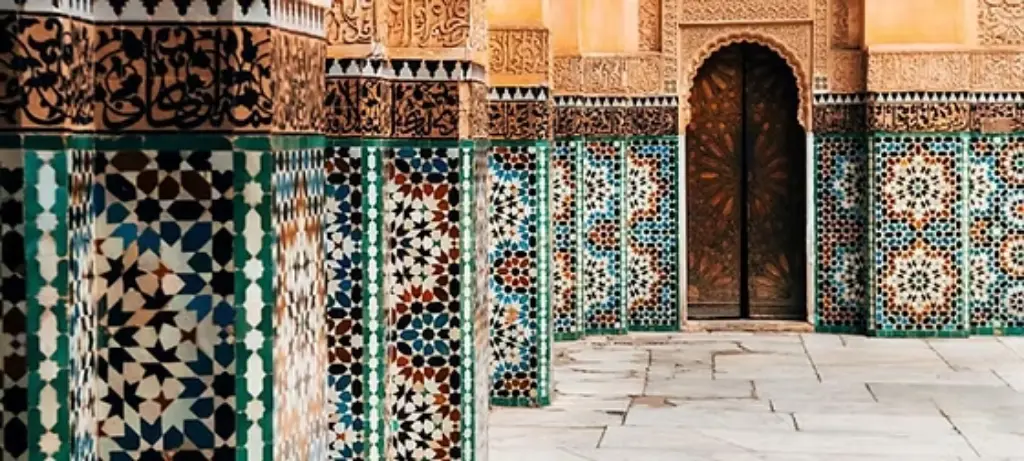
These vibrant mosaics adorn walls, floors, fountains, and courtyards throughout Morocco. The complex patterns, often inspired by Islamic geometric principles, exhibit both beauty and mathematical sophistication. The colors, often deep blues, greens, yellows, and browns, are derived from natural pigments, giving each piece a unique character.
See also The Worldwide Obsession with Nordic Culture and Minimalism
The Worldwide Obsession with Nordic Culture and MinimalismEach tile is meticulously crafted, reflecting the artisan’s dedication to their craft. This artistry is not just decorative; it speaks to a long tradition of skilled craftsmanship and deep connection to cultural heritage.
Tadelakt: Polished Plaster with a Timeless Appeal
Tadelakt, a traditional lime plastering technique, creates a smooth, waterproof surface with a unique sheen. This ancient Moroccan art form has been used for centuries to coat walls, basins, and hammams (traditional bathhouses). The process involves applying a mixture of lime plaster, water, and natural pigments.
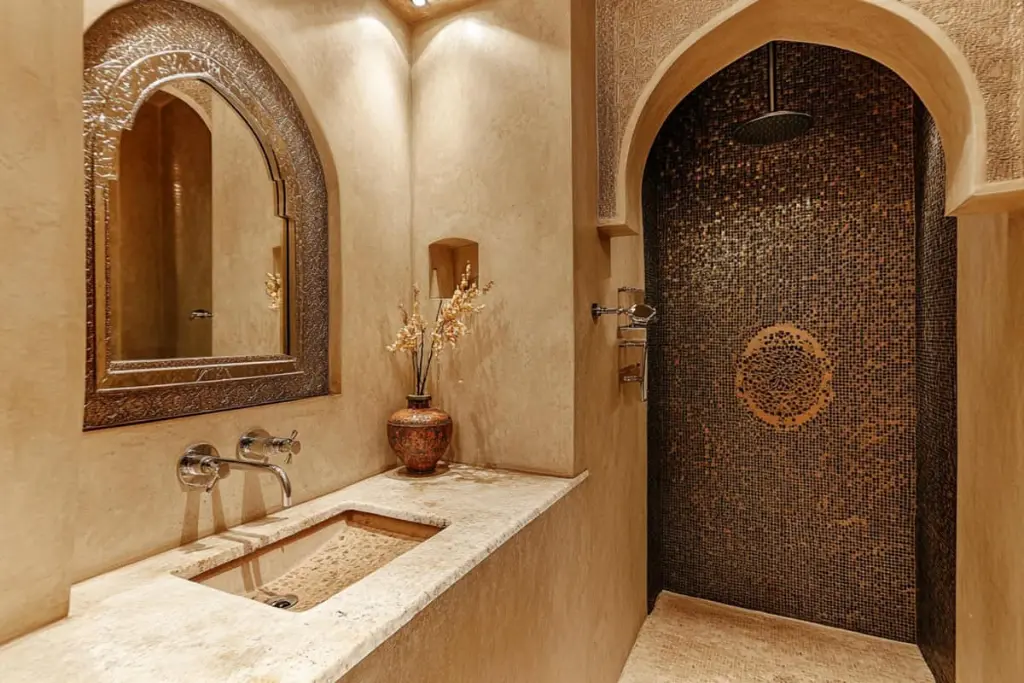
Then, the plaster is polished with a smooth stone until it develops a distinctive sheen and becomes water-resistant. Tadelakt is not just visually appealing but also eco-friendly and durable. The resulting surface has a natural, earthy feel that adds warmth and texture to any space. This technique is now admired and adopted worldwide for its aesthetic appeal and sustainable nature.
Textiles and Weaving: Stories Woven in Thread
Moroccan textiles tell captivating stories through intricate patterns and diverse techniques. From the luxurious silk of the caftans to the durable wool of Berber carpets, each piece showcases exceptional skill. Berber carpets, in particular, are renowned for their unique designs and the stories they tell.
See also What Makes American Culture So Influential Worldwide
What Makes American Culture So Influential Worldwide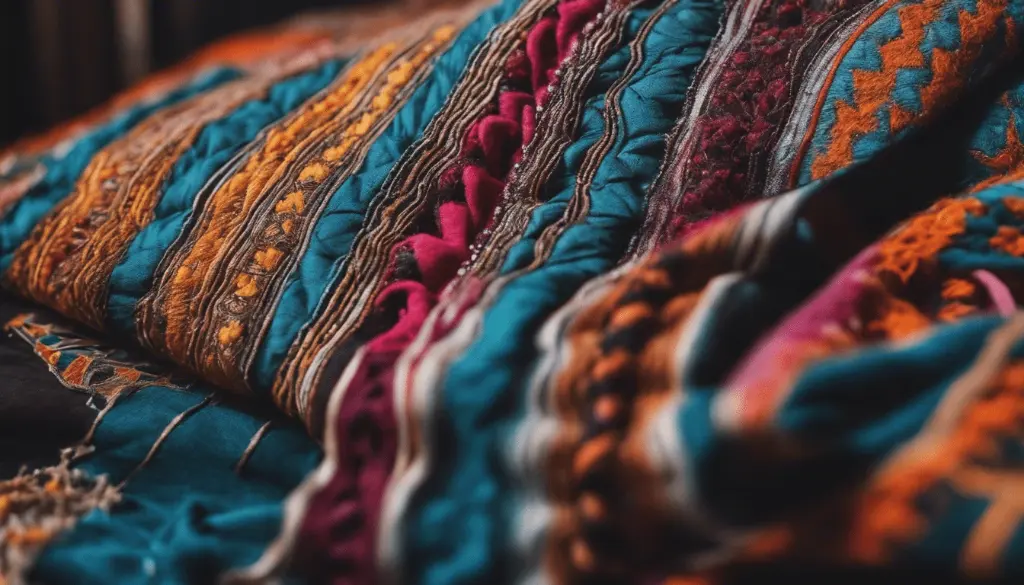
These hand-knotted rugs, often adorned with geometric patterns and vibrant colors, are created using traditional weaving techniques that have been passed down through generations. They hold significant cultural meaning and are not just decorative but also deeply symbolic.
The art of textile weaving extends to other forms, such as hand-woven blankets, cushions, and wall hangings, each displaying a distinct regional style and design. The attention to detail and artistry in these textiles demonstrates a rich cultural heritage.
Metalwork: Crafting Beauty in Brass and Copper
Moroccan metalwork showcases the artistry and skill of local artisans. From intricately carved lanterns to beautifully decorated trays and teapots, metalworking is an integral part of Moroccan design. Brass and copper are the most commonly used materials, often adorned with complex geometric patterns or floral motifs.
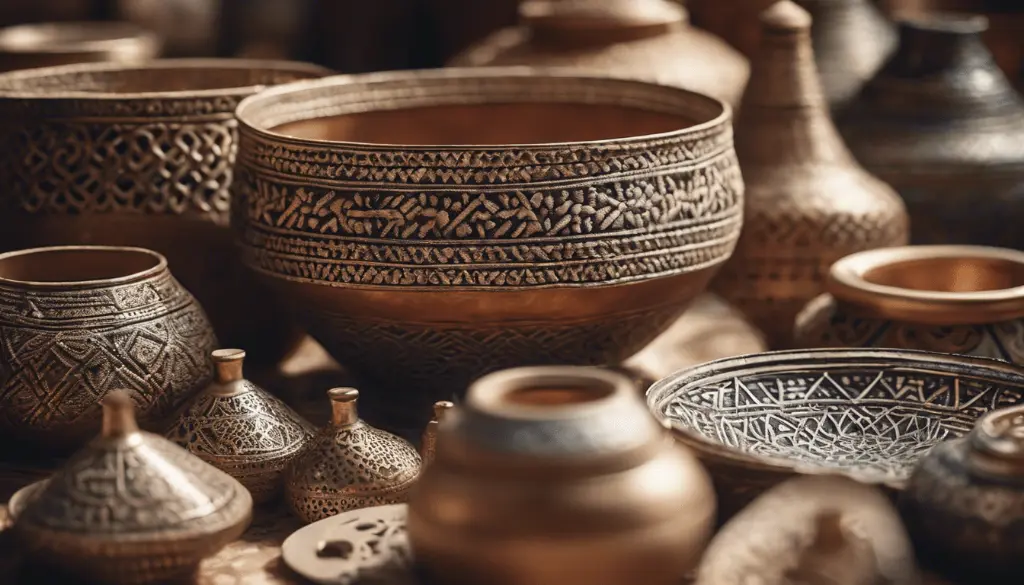
The process of metalworking involves shaping the metal through hammering, engraving, and chiseling. Each piece is handcrafted, reflecting the artisan’s skill and creativity. The play of light and shadow on these metal surfaces adds a touch of elegance and sophistication. Moroccan metalwork often combines functionality with beauty, creating pieces that are both practical and aesthetically pleasing.
Woodwork: Intricate Designs in Carved Wood
Moroccan woodwork is characterized by its detailed carvings and refined craftsmanship. From intricately designed doors and window frames to hand-carved furniture and decorative objects, woodwork is an integral part of Moroccan artistry. Cedarwood is a popular choice due to its fragrant aroma and durability.
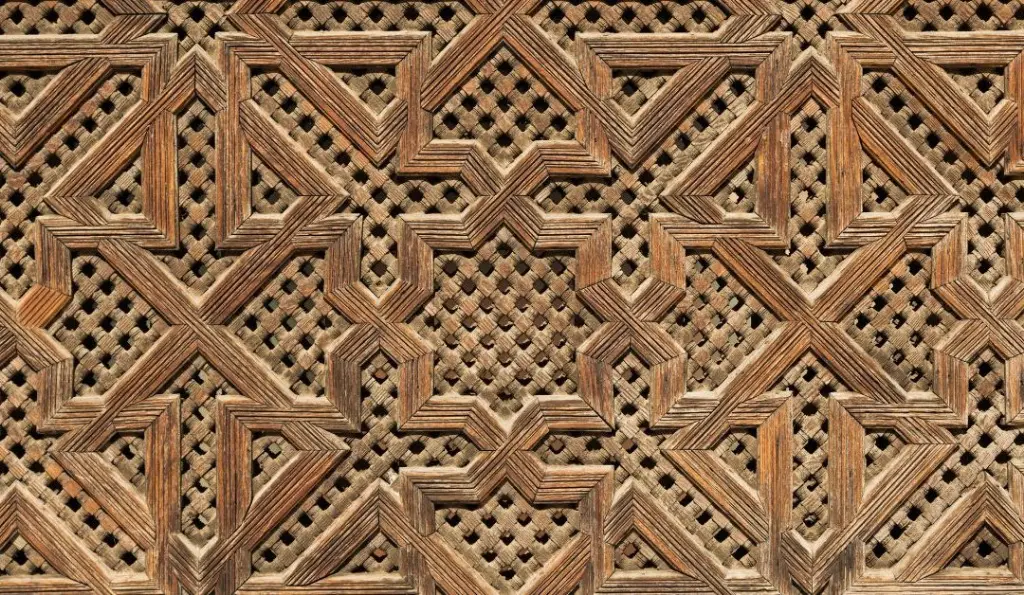
Artisans use a variety of tools and techniques to create detailed patterns and motifs, often inspired by Islamic geometric designs or natural elements. The process of carving wood requires considerable skill and patience. The resulting pieces are not just functional but also works of art that add warmth and character to any space. The level of craftsmanship demonstrates the dedication and artistry of Moroccan woodworkers.
Captivating Spaces: Moroccan Design
Moroccan design is as compelling as its art, characterized by its use of rich colors, intricate patterns, and natural materials. It creates spaces that are both beautiful and inviting, embodying a sense of warmth and exoticism that has captured the attention of designers and homeowners worldwide.
Riads: Oases of Tranquility in the City
The traditional Moroccan riad, a house or palace with an interior courtyard, is a prime example of Moroccan design principles. These tranquil spaces offer a respite from the hustle and bustle of city life. A central courtyard is a common feature, often adorned with a fountain, lush plants, and intricate tilework.
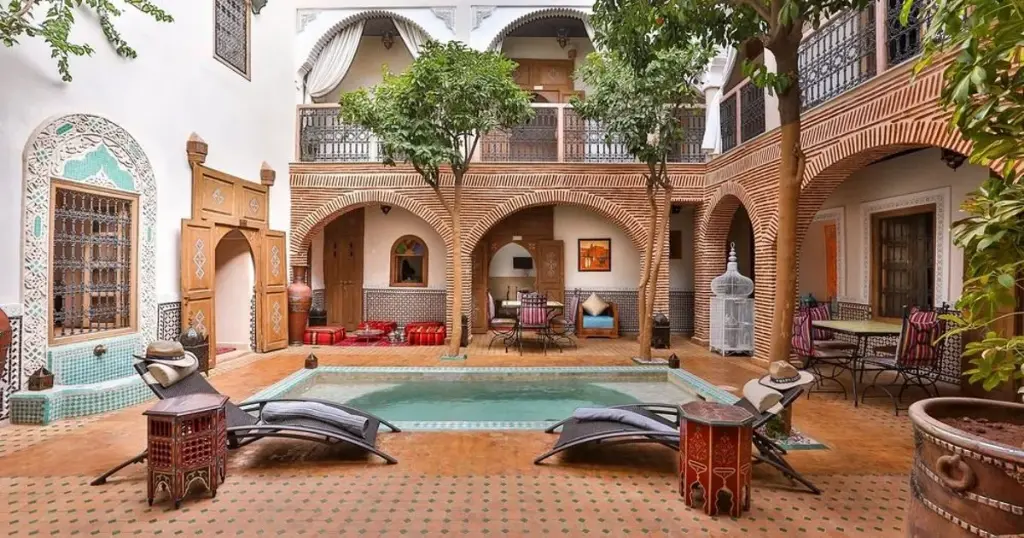
The courtyard serves as the heart of the riad, providing a space for relaxation and social gatherings. Rooms typically open onto this central space, allowing for natural light and ventilation. Riads often use traditional materials like tadelakt, zellige, and wood, creating a seamless blend of aesthetics and functionality. The beauty and serenity of the riad have made it a sought-after style, inspiring designs around the world.
Use of Color: A Vibrant Palette Inspired by Nature
Color is an essential element of Moroccan design. The rich and vibrant palette is inspired by the country’s landscapes, from the deep blues of the sky to the warm yellows of the desert. Bold hues like turquoise, emerald green, saffron yellow, and deep reds are often used in combination, creating a visually striking effect. These colors are not only aesthetically pleasing but also imbued with cultural significance.
For example, blue is associated with protection, while green symbolizes life and prosperity. The use of color creates spaces that are not only visually stunning but also filled with warmth and character. This bold use of color is a defining feature of Moroccan design.
Patterns and Textures: Layered Complexity
Moroccan design is characterized by its use of intricate patterns and layered textures. From the geometric motifs of zellige to the elaborate designs of Berber carpets, patterns play a vital role in creating visual interest. The use of different textures, such as the smooth surface of tadelakt, the soft wool of textiles, and the intricate carvings of wood, adds depth and complexity to the space.
These elements combine to create a rich and tactile experience. The patterns are not merely decorative; they often carry symbolic meanings rooted in Islamic and Berber cultures. The combination of patterns and textures is what gives Moroccan design its distinctive character and timeless appeal. The layering technique creates a sense of opulence and warmth.
The Importance of Natural Light and Ventilation
Moroccan design prioritizes the use of natural light and ventilation, reflecting the country’s hot and dry climate. Courtyards, with their open layouts, allow for natural light to flood into the space, while also promoting air circulation. Windows and openings are strategically placed to maximize airflow and keep the interior cool.
This emphasis on natural elements not only makes the spaces comfortable but also reduces the reliance on artificial lighting and air conditioning. The incorporation of natural light and ventilation is a testament to the practical and sustainable aspects of Moroccan design. This is a core principle of Moroccan architecture and design that has proven both effective and timeless.
Low Seating and Comfortable Spaces
Comfort is a key consideration in Moroccan design, often emphasized through the use of low seating and comfortable textiles. Floor cushions, poufs, and low sofas are commonly used to create a relaxed and inviting atmosphere. These elements promote a sense of informal gathering and hospitality, encouraging people to relax and enjoy each other’s company.
The incorporation of comfortable textiles, such as hand-woven blankets and cushions, adds to the sense of warmth and coziness. This focus on comfort and relaxation is integral to the Moroccan approach to interior design, creating spaces that are not only beautiful but also functional and inviting. The informal seating arrangements encourage social interaction and provide a welcoming ambiance.
A Feast for the Senses: Moroccan Cuisine
Moroccan cuisine is renowned for its diverse flavors, aromatic spices, and slow-cooked dishes. This culinary tradition reflects the country’s rich history and cultural influences. From the savory tangines to the sweet pastries, Moroccan food offers a sensory experience that is as varied and vibrant as the culture itself.
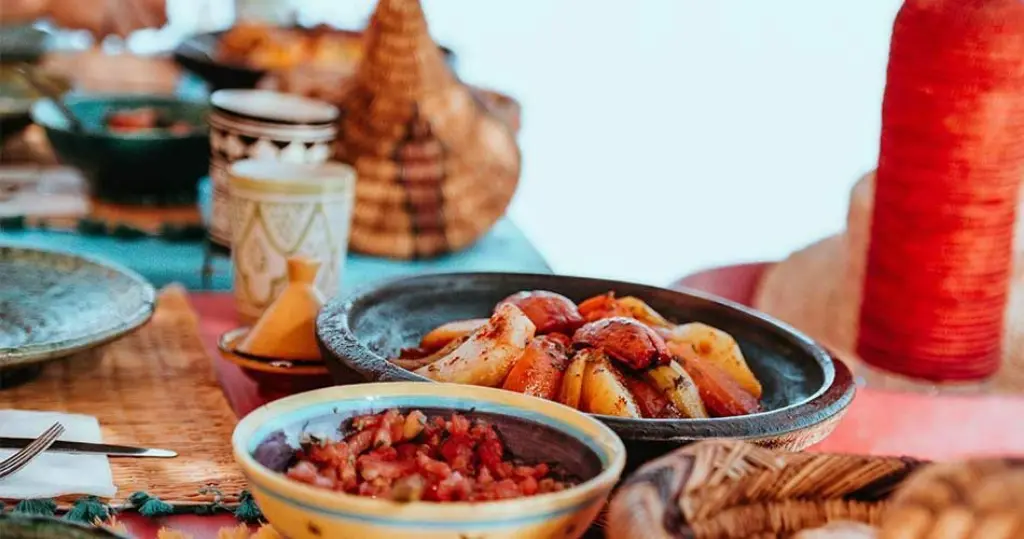
Tagine: The Heart of Moroccan Cooking
The tagine, a slow-cooked stew prepared in a conical earthenware pot, is a cornerstone of Moroccan cuisine. This dish showcases the art of blending various flavors and textures. Tagines can be made with a variety of ingredients, including meats, poultry, vegetables, and fruits. The slow cooking process allows the flavors to meld together, creating a rich and deeply satisfying dish.
Spices, such as ginger, cumin, turmeric, and saffron, are used liberally to create complex and aromatic flavor profiles. The tagine is not just a dish but also a cultural symbol, representing the country’s traditions of hospitality and culinary innovation. The unique cooking method contributes to the tender and flavorful result.
Couscous: The Staple Grain
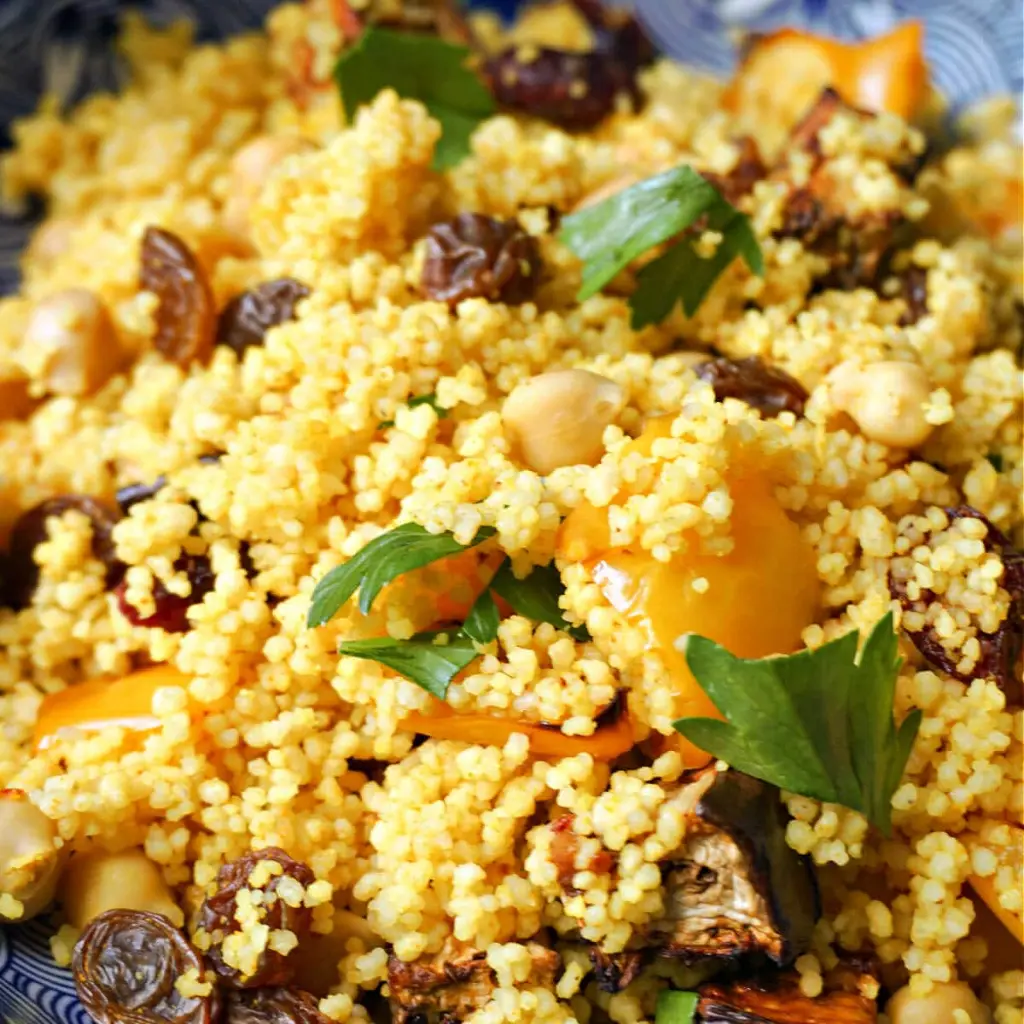
Couscous, a fine grain of semolina, is a staple food in Morocco and throughout North Africa. It is often served as an accompaniment to tagines, stews, and other dishes. Couscous is prepared by steaming the semolina grains, often with a mixture of spices and aromatics. It’s a versatile ingredient that can be used in both savory and sweet dishes.
The preparation of couscous is an art form in itself, with different regions and families having their unique methods and traditions. The light and fluffy texture of perfectly prepared couscous makes it a delightful addition to any meal. It serves as a foundational element in many Moroccan culinary experiences.
Spices: The Essence of Moroccan Flavors
Spices play a crucial role in Moroccan cuisine, adding layers of flavor and aroma to every dish. Ras el hanout, a complex blend of spices, is a signature ingredient in many Moroccan recipes. This blend can include up to 30 or more different spices, including cinnamon, cardamom, cloves, and nutmeg. Other commonly used spices include cumin, turmeric, ginger, paprika, and saffron.
These spices not only enhance the flavor of the food but also provide numerous health benefits. The careful use of spices is what gives Moroccan cuisine its distinctive and captivating character. They create the vibrant and aromatic experiences that Moroccan food is celebrated for.
Mint Tea: The Drink of Hospitality
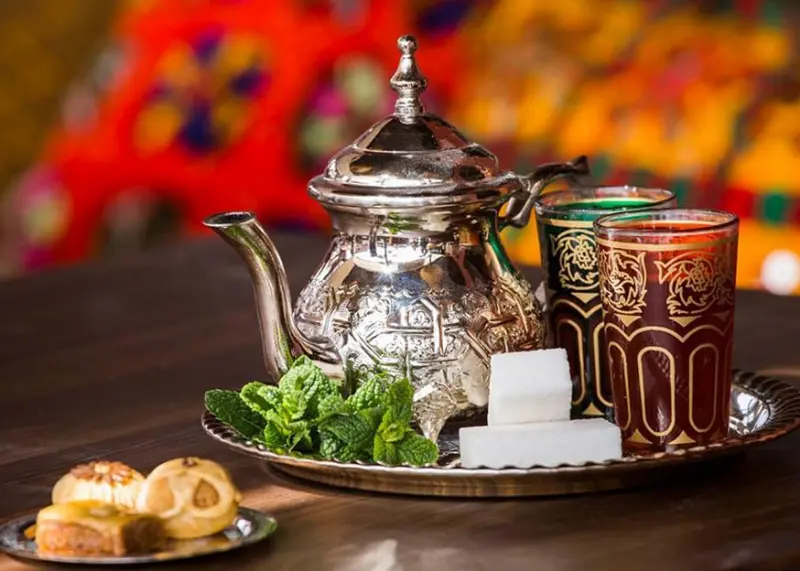
Mint tea, or “Atay,” is a fundamental part of Moroccan culture and hospitality. It’s a traditional drink served at almost every occasion, from family gatherings to business meetings. The preparation of mint tea is a ritual in itself. Green tea is steeped in boiling water with fresh mint leaves and sugar, often poured with a dramatic flourish from a height.
The tea is served in small, ornate glasses, and it is common for multiple rounds to be offered. Mint tea is not just a beverage; it represents the values of hospitality and friendship, and its warm, sweet, and refreshing taste is a defining feature of Moroccan culture. It symbolizes welcome and generosity.
Pastries: A Sweet Conclusion
Moroccan pastries are renowned for their delicate flavors and intricate designs. From the sweet and flaky baklava to the delicate almond cookies, Moroccan desserts offer a delectable conclusion to any meal. These pastries often feature ingredients like honey, nuts, and rosewater, creating a rich and aromatic flavor profile.
The preparation of Moroccan pastries is a labor of love, often involving meticulous techniques that have been passed down through generations. These desserts are not just a sweet treat but also an expression of Moroccan culinary artistry. They are a testament to the richness and diversity of Moroccan cuisine.
Global Appeal: Why Morocco Captivates
The worldwide fascination with Moroccan art, design, and cuisine stems from its ability to blend the exotic with the familiar. The visual richness, the warm hospitality, and the tantalizing flavors have all contributed to its global appeal. It offers a unique sensory experience that is both engaging and captivating. The cultural depth and historical richness of Morocco make it an intriguing destination for those seeking authentic and meaningful experiences.
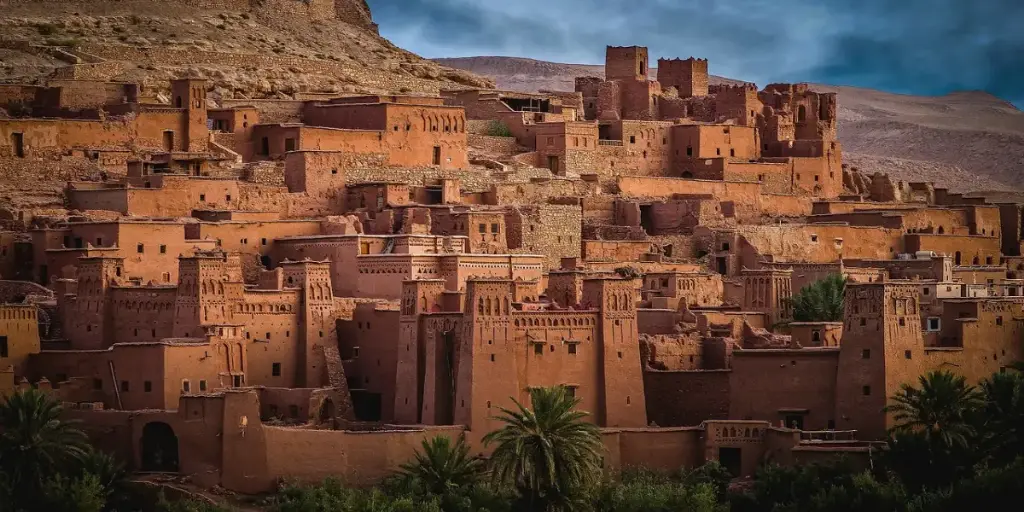
In conclusion, the worldwide fascination with Moroccan art, design, and cuisine is a testament to its rich cultural heritage and its ability to captivate the senses. The intricate artistry, the inviting design, and the flavorful cuisine combine to create a unique and compelling experience that continues to inspire and enchant people around the globe. Morocco’s enduring appeal lies in its ability to offer a glimpse into a vibrant and timeless culture that continues to be celebrated and admired.“`

